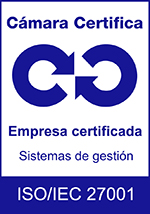Source: Enablon Insights
Many analysts, researchers and professional organizations have published reports on EHS applications. These reports include valuable information on market trends and buyer preferences. Each report presents a unique perspective on the
Environmental management tools
of the
Health and Safety
There are “Usual Suspects” with respect to the most popular features. Almost all reports show that buyers want capabilities for incident reporting, audit management, safety management, environmental compliance, etc.
Instead of writing a post about the most important functions and capabilities of an EHS Software, we will highlight five that are underrated and deserve to be in a more prominent place as they have important features, but are not getting as much attention as they deserve.
-
Change Management
Let’s start by clarifying what Management of Change (MOC) is. There are two different types of MOC. First, OSHA’s ProcessSafety Management (PSM) standard defines 14 elements that are part of a PSM plan and MOC is one of them (paragraph (l) of the standard). Secondly, MOC is used in a more general context, not only defined within the scope of PSM, and applies to any type of change, whether it is a change in people, processes, equipment or products. It is the second type we are talking about.
Any type of change can potentially create a risk of an adverse event, such as a worker injury or environmental incident. To reduce the risk of incidents, a change introduced in the workplace must be properly managed through workflows that follow approvals, validations and notifications. Appropriate approvers should review the change, assess whether risks of incidents exist, identify steps to mitigate potential risks, and ensure that all affected personnel are notified. Managing change requests and checklists manually is time consuming and presents the risk of human error. The use of a Change Management solution offers a better approach.
Changes can introduce potential risks of non-compliance, operational inefficiencies, workplace incidents and equipment failures. An EHS management platform that includes MOC functionality can help mitigate these risks.
-
Contractor Safety
Organizations that use contractors have as much responsibility for the safety of contracted workers as their own workers. In addition, the safety performance of a contractor has a direct impact on the safety performance of the contracting organization. The result is that any incident or safety management system should ideally include functionality for contractor safety.
What are the practical uses of a contractor safety module? First, contractors can report incidents, near misses and observations in the same EHS software used by the contracting company. This also applies to a mobile security application. Second, the platform would distinguish between data entered by contractors and data entered by the contracting organization. This allows safety performance to be measured overall, for the contracting organization only, and for each individual contractor. Third, contractors can be evaluated for safety performance based on incidents or other metrics, allowing organizations to evaluate contractors for future projects.
There are other uses for a contractor’s safety application, such as getting contractors to acknowledge the company’s safety policies and storing documents submitted by contractors on their safety performance. The increasing use of contractors is a reality for many companies today, and it is a reality that must be reflected in the EHS software system.
-
Data Quality Controls
For asset-intensive industries (e.g., petroleum refineries) that have to measure air emissions to comply with air quality regulations or improve environmental performance, there may be millions of air emissions data records to capture in total, at the facility level and down to the individual piece of equipment unfortunately, The more data collected, the greater the risk of inaccuracies and data quality problems. For many processes, such as air emissions calculations, data collection and data quality must go hand in hand. It is not enough to collect large amounts of data. There must also be validations and verifications to ensure that the data is accurate before it is processed for calculations, reports, etc.
There are many ways to perform quality checks on air emissions data or other types of data. For example, the distribution of data values can be checked for outliers that may be anomalies rather than correct values. In addition, data ranges can be verified to ensure that they correspond to what is expected based on historical values or best judgment.
With millions of data records, manual verification of data quality is not an option. The EHS application should include data quality checks that automatically run through all data records to flag those that may require additional validation.
-
Goal-driven user interface
When most people think of different user interfaces (UIs), they think of dashboards for executives and managers, and different screens based on access rights (read-only, edit, etc.). These types of UIs are common in EHS Software, and we will soon reach a point where buyers of EHS applications will take it for granted. But buyers of EHS management solutions must go beyond their traditional UI expectations. They must learn to appreciate the value of a sophisticated, goal-oriented user interface as it increases productivity and promotes user adoption.
A goal-driven UI goes beyond dashboards and different screens based on access rights. It displays metrics, information and tasks directly relevant to the objectives a user wishes to achieve, and supports multiple domain-specific objectives (e.g., environmental compliance, occupational health and safety, process safety, product stewardship, etc.). It does not prevent a user from accessing other information, but rather provides the option of see only what you need to know. For example, a compliance manager would see progress on audits that need to be completed, while a safety manager would see the number of incidents in the workplace and could report new ones with just a few clicks.
-
Mobile Tasks and Action Plans
The use of EHS mobile applications is growing, and there is an increased awareness of their benefits among EHS software buyers. Mobile applications allow workers to report incidents in the field, receive real-time safety alerts, and perform audits and inspections from anywhere. These characteristics are not underestimated and their value is increasingly recognized. Rather, it is what happens after that people should be aware of.
An incident or near miss, or the findings of an audit or inspection, may bring to light new risks or opportunities for improvement. Discovering new information is just the beginning. What you do with the information is more important, so corrective and preventive action plans are important. EHS mobile applications can help improve action plans by allowing users to create and assign tasks on the fly, receive details of assigned tasks, and complete and close tasks.
Many workers will not be in front of a computer most of the day. But they will have their mobile devices and will monitor them regularly. Having access to tasks directly from mobile devices can help improve the management of action plans and ensure their successful completion.
There are more underappreciated characteristics and capabilities, but these five deserve attention. If you are in an EHS software selection process, be sure to evaluate whether these features are important to you and include them in your evaluation criteria.


